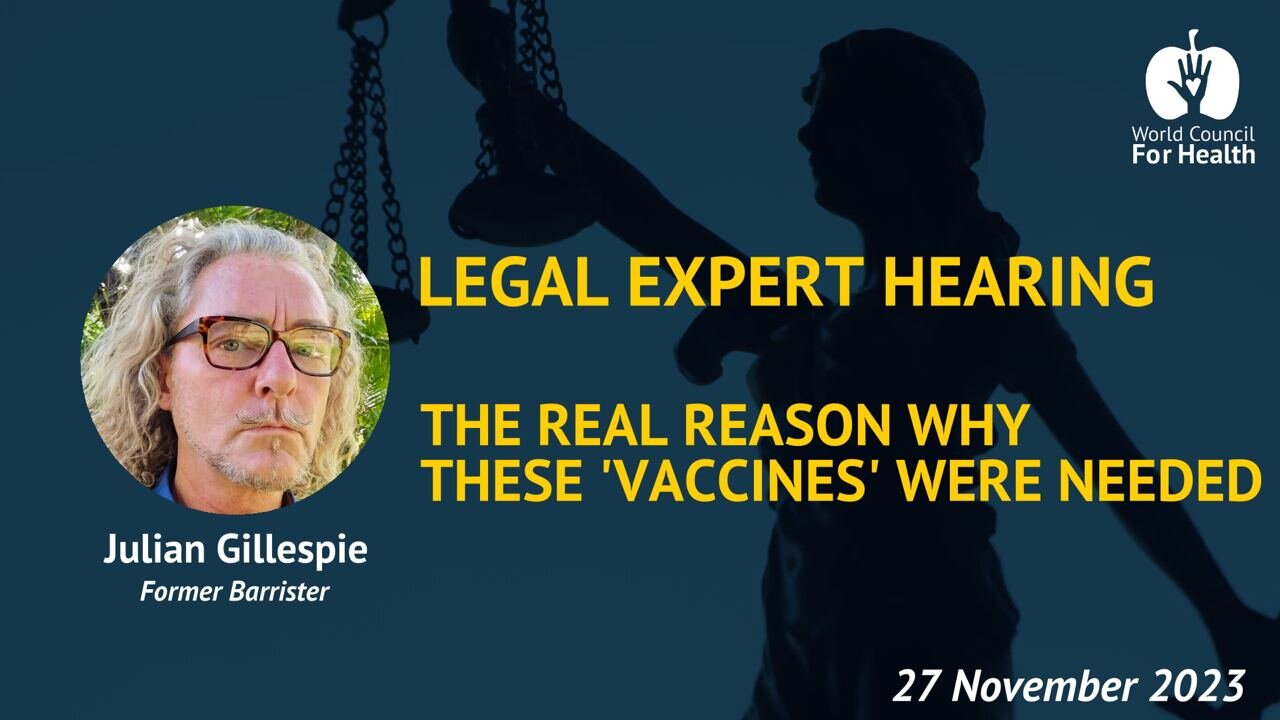Premium Only Content

The Real Reason Why These 'Vaccines' Were Needed
Julian Gillespie, a retired lawyer and former barrister from Australia, has been researching opportunities for legal recourse to the mRNA shots in various jurisdictions.
By October 2022, he had determined that they could be defined as being or containing GMOs.
Watch the full legal hearing on Plasmidgate:
https://worldcouncilforhealth.org/justice
Very similar definitions are found in GMO Acts around the world and have been in existence for approximately two decades. The LNP-modRNA (and the recently discovered LNP-modDNA) complexes fulfil the definition of GMOs.
In the UK regulation, for example, the term ‘micro-organism’ is defined as an “entity, cellular or non-cellular, capable of replication or of transferring genetic material”. Essentially, these complexes are a new form of synthetic virus “capable of transferring genetic material.” The LNP part of these complexes carries the genetic material throughout the human body and transfers the genetic material across the cell membrane of all cell types. Finally, these complexes fulfil the part of the definition which requires that they must be artificially modified.
As pointed out by fellow panelist Katie Ashby-Koppens, Australia’s Gene Technology Act requires that a licence be obtained to approve the importation, transport, and marketing of a GMO. This requires a significant risk assessment to prove no environmental damage, as well as consent from the Secretary of State. However, Julian discovered that in the UK the manufacturers managed to avoid having to obtain a licence by instead applying under the Human Medicines Regulation 2012, which did not require this information.
Julian comments on the absurdity of this loophole:
“So we've got a situation where, in the UK, if you wish to get marketing approval for a GMO that you're going to spray on plants everywhere, you have to go through this extensive risk assessment process and receive consent. But If you're going to inject it into humans you don't have to disclose it, which is absolutely remarkable.”
-
 2:00:54
2:00:54
World Council for Health
5 months agoWCH Update: The Truth About Parasites, Mould, Fluoride (and more)
2.46K1 -
 1:10:58
1:10:58
vivafrei
2 hours agoBanning the Burning of the Flag? Raja Jackson Assault & Some Insanely Stupid Takes! NYC Chems & MORE
19.5K9 -
 LIVE
LIVE
The Mel K Show
39 minutes agoMORNINGS WITH MEL K - The Future of the Constitutional Republic: Local Action for National Impact 8-26-25
376 watching -
 UPCOMING
UPCOMING
The Shannon Joy Show
2 hours ago🔥🔥TACO Trump Rug Pulls AGAIN - Deploying His Fascist Police State In Red States NOT Blue.🔥🔥
272 -
 LIVE
LIVE
LFA TV
5 hours agoLFA TV ALL DAY STREAM - TUESDAY 8/26/25
5,514 watching -
 27:39
27:39
Crypto.com
2 hours ago2025 Live AMA with Kris Marszalek, Co-Founder & CEO of Crypto.com
20K2 -
 LIVE
LIVE
Trumpet Daily
21 minutes agoTrumpet Daily LIVE | Aug. 26, 2025
178 watching -
 34:31
34:31
Rethinking the Dollar
52 minutes agoWednesday Morning Check-In: Let's Talk...
16 -
 LIVE
LIVE
The Big Mig™
3 hours agoViolence & Burning The U.S. Flag, Democrats New Battle Cry
5,206 watching -
 LIVE
LIVE
The State of Freedom
3 hours ago#327 Digging Deeper into the Carbon Capture Scam w/ Brad LeBlanc
37 watching